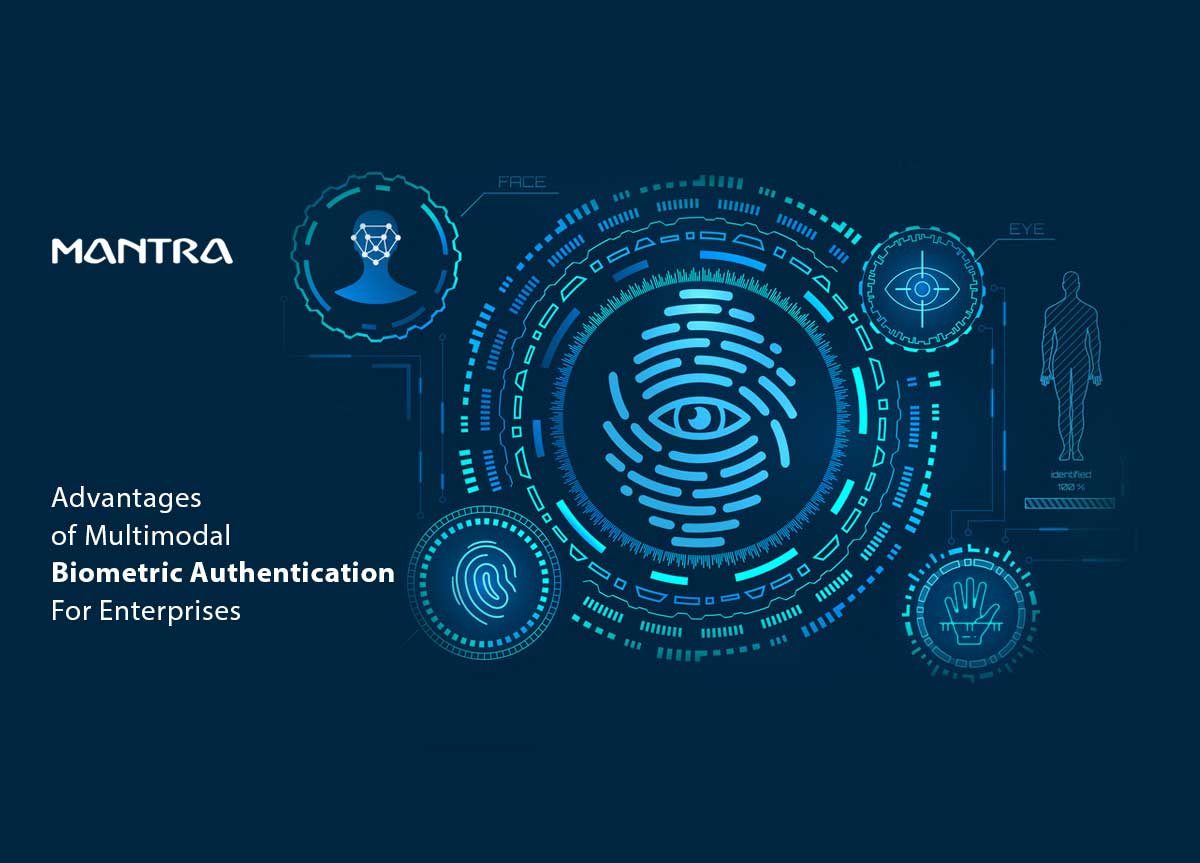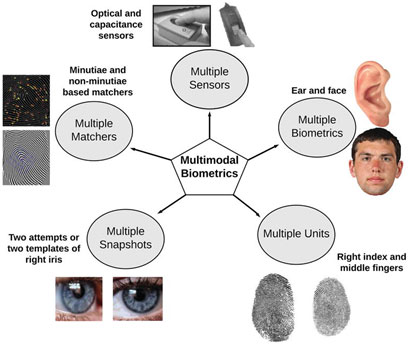
As biometric systems are being adopted increasingly by enterprises for identification, the challenges to implement secure identification of employees is rising substantially. Hence, the need of the hour is to substitute single modality biometric systems with multimodal biometric identifications systems in organizations in order to enhance security.
What is multimodal biometric authentication?
As the name speaks for itself, Multimodal biometric systems use more than one physiological feature of an individual for the purpose of identification and verification. The system captures an individual’s fingerprint patterns, facial geometrics and Iris pattern for the user identity authentication. This method of storing multiple physiological features of an individual is appropriate, when it’s crucial to safeguard sensitive data.

Advantages of employing multimodal biometrics in enterprises:
Accuracy :- Multimodal biometric systems have almost no false match rates (FMR) or false acceptance rates (FAR) compared to unimodal biometric systems. False match rates and false acceptance rates are the performance metrics of biometric systems. It defines the occurrences when the system fails to match an existing pattern stored in the database or falsely matches it to a pattern found in the database. Since multimodal biometric systems use more than one physiological feature such as fingerprints, palm vein pattern or Iris patterns to verify an individual, the level of accuracy is undoubtedly high.
Enhanced recognition and security :- Secondary advantage of employing a multimodal biometric system is its higher threshold recognition capabilities. Even if one of the system identifiers fails matching a particular behavioral/physiological trait, it can use the other traits to identify the individual.
Universality :- In some cases, certain people cannot provide a standalone biometric credential due to physical disabilities. But a multimodal biometric system can take any other form of biometric credential for authentication.
Spoof attacks :- Multimodal or unimodal, both are vulnerable to spoofing activities, where hackers attempt to spoof the biometric trait of an enrolled user to get access to sensitive data. By employing integrated iris sensors or fingerprint scanners with liveness detection, spoofing activities can be eradicated.
Rectified noisy data :- Sometimes the data acquired during authentication could vary compared to the input data during enrolment, due to misplacement of a finger which affects the matching procedure. With Multimodal biometric systems, noisy data and intra-class variations can be rectified by using multiple biometric data for verification.
By now, it should be clear that multimodal biometric systems are just the combination of unimodal biometric systems such as fingerprint scanners, iris sensors and others. The specialty of a multimodal biometric system is that even if one of these traits fails to match with the patterns stored in the database, the system is still capable to identify the person.
It would be prudent if industries such as healthcare, finance and defense where accuracy and security is a top priority employ multimodal biometric systems, as it can save the organization a huge amount of loss. Given its vast set of advantages, Multimodal biometric systems in recent years, are being widely adopted by several companies to ensure the safety of their data and assets.
Comments